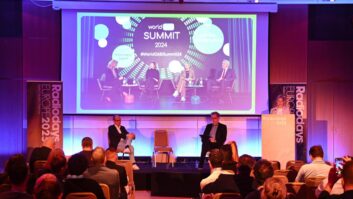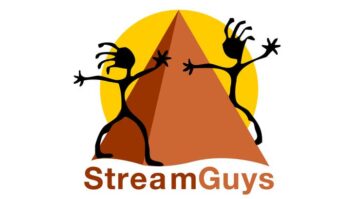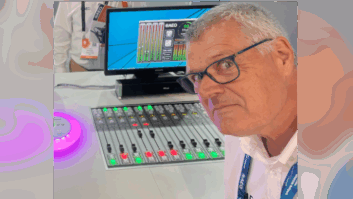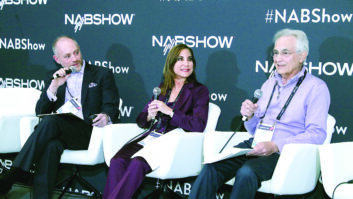During the Radiodays Asia presentation entitled “Cool new tech for radio that you should be using,” self-described “radio futurologist” James Cridland shared a few cutting-edge radio production tools — one of the bigger highlights of the two-day conference held at Malaysia’s Shangri-La Kuala Lumpur hotel this past week. The Radiodays Asia event was a collaboration between the Radiodays Europe conference and broadcasting partners in Asia and Australia.
Changes from Radio’s Old Days
To put his topic into perspective, Cridland showed an image of an old razor blade, splicing tape and metal splicing block he once used to edit 1/4″ audio tape, followed by an archival studio photo of LBC, the first commercial radio station that opened in London, UK in 1973. “They spent millions upon millions of dollars on the equipment that went into their radio studios,” Cridland noted. He then jumped to the present day with a video of WCBS-FM (New York City) deejay Broadway Bill Lee producing his on-air show at home, using a combination of equipment that cost about $3,000 in all.
“He is literally broadcasting from his basement and using stuff that frankly looks as if he could have bought it in the shops,” said Cridland. “In fact, he probably did.”
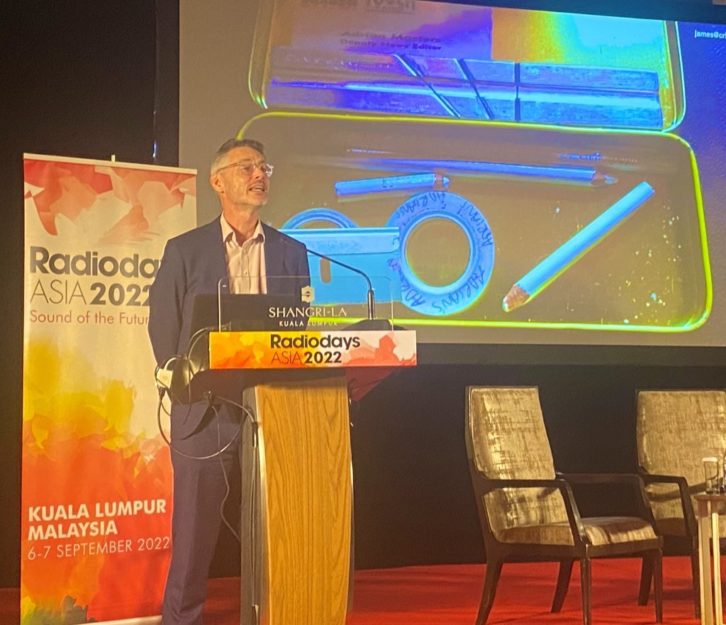
Audio Editing
Having made this point, Cridland dove into the “cool new tech” that his talk had promised. He started with Hindenburg, an audio production software tool designed for radio journalists. “It’s deliberately built for editing speech,” he explained. “It does things like automatic leveling of the audio that you pull in … It’s [got] everything you need to create a radio package and nothing that you don’t.”
Cridland then jumped to an audio editing tool called Descript. This tool can edit audio files using onscreen transcripts of the content; not only removing flubs and stammers, but even allowing new spoken words to be inserted into the audio without anyone actually saying them.
“This system knows my voice,” he explained. After Cridland entered new words into the transcript, the Descript software used an artificially-generated version of his voice to insert them into the audio file. And yes, the insertion didn’t stand out. Later during his presentation, Cridland showed how synthetic voice generation makes it possible for morning show talent to “voice” radio content all day without actually doing so, and how this content can be translated into a host of different spoken languages.
[Check Out More Products at Radio World’s Products Section]
Updating Content
Updating newscasts and podcasts can be a time-consuming process. But as Cridland demonstrated to Radioday Asia attendees, such updates can be done as needed in real-time using a service called Spooler.fm.
“What Spooler allows you to do is create the homepage version of a newscast,” he explained. “Every individual story is its own file. You can move them around in a playlist. You can update with new versions of any particular story without changing the others. And you can publish instantly with updates as often as you want.”
Cridland then played an interview clip with radio deejay Gav Richards, who produces a syndicated Top 10 music show called “The Ten Most Wanted.” Using his own custom-written software called Smart VT, Richards breaks his spoken word content into very small sections, with items like station identifications and other branding elements saved as standalone audio files. These are then integrated by the software with Richards’ song information and other banter to create syndicated programs that sound like they were completely produced for each station they run on. This approach takes the awkwardness out of conventional syndicated radio shows, where local insertions of station names stand out.
Next, Cridland showed how audio content can be easily married with photos and video clips using the Adori publishing platform, so that it can play well on YouTube and other video streaming sites. “YouTube is a tremendously important place to get your content found,” he said. “It’s the second largest search engine on the internet and it is really important that you get some really good content on there.”
These are just some of the many innovative tech items that Cridland covered in his Radiodays Asia talk. Besides keeping his audience informed and entertained, this radio futurologist’s examples built a solid foundation for his closing remarks:
“There’s an awful lot of great new technology out there,” Cridland said. “If you use it really well, it can really change how radio is made and we can really focus on connecting with our audiences and making a great sounding station.”


